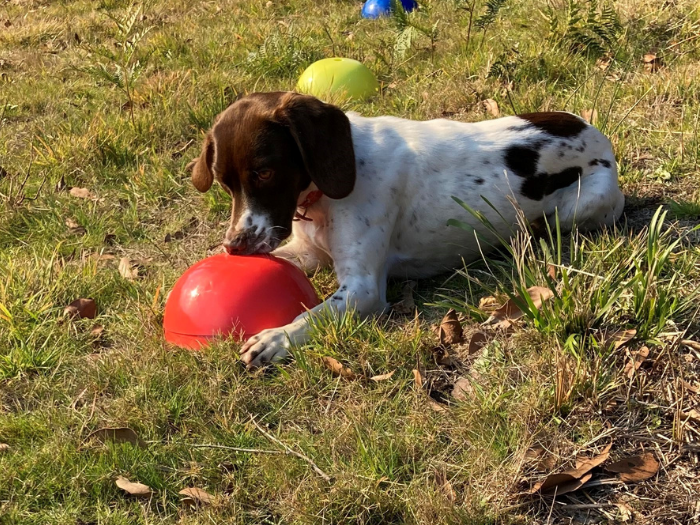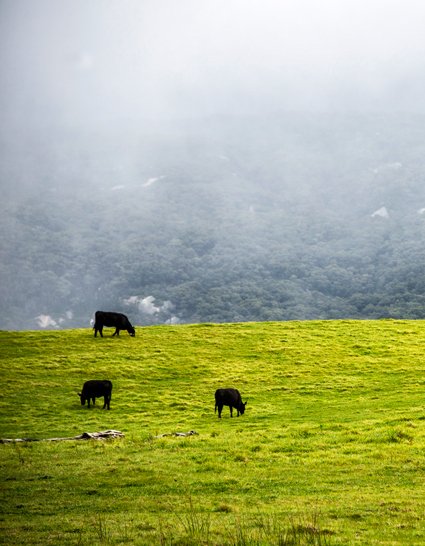Natural Resource Management
Natural Resource Management (NRM) is the management of the natural resources that make up Australia’s natural landscapes, such as land, water, soil, plants and animals.

NRM aims to balance economic, social and environmental objectives.
What is NRM?
What is NRM?
Natural Resource Management (NRM) is about working with communities to care for our environment, such as the land, water, soil, plants and animals that make up our landscapes.
NRM brings people together to make smart, balanced decisions about how we sustainably use our natural resources to ensure present and future generations experience the quality of life they provide. Whether it's enhancing a local creek, managing farmland sustainably, or caring for native wildlife, NRM recognises that healthy environments mean healthy communities.
NRM is a collaborative, long-term approach where farmers, residents, businesses, and governments work together to keep our landscapes thriving. The Tasmanian Natural Resource Management Act 2002 (Amendments 2018) established a framework that includes the Tasmanian Natural Resource Management Council, which advises the minister on NRM issues; and three regional committees, with the role to develop and implement an NRM strategy for each region.
NRM and the community
NRM and the community
From the land that produces our food, the water we drink and the air we breathe, to our recreational activities, everyone depends on natural resources and we share the responsibility to use these wisely and conserve them for the future.
Participation in NRM is voluntary and those involved want to live in a healthier and more sustainable world and ensure this for future generations. Healthy natural spaces enrich our health and recreational experiences, so minimising disturbance and repairing sensitive environments are important aspects of NRM.

Volunteers are at the heart of many NRM North projects.

Sugar the scent dog working as part of the state-wide Weeds Action Fund project.
NRM in Tasmania
NRM in Tasmania
The three formally recognised NRM organisations in Tasmania are NRM North, NRM South and Cradle Coast NRM. Whilst each organisation is overseen by its own management committee and has separate operational budgets, there is significant collaboration between the organisations to achieve the best possible outcomes for NRM in Tasmania.
The organisations share common themes, asset classes and priorities within their regional strategies, which allows for collaborative goals and cross-regional investment.
Collaboration occurs between the three regions through:
- Regular meetings of CEOs and Chairs
- A communications working group
- Development of the regional Emergency Preparedness, Recovery & Response Plans
- Cross-regional projects including the National Soil Monitoring Program, Flood Resilience Project and Regional Soil Coordinator.
NRM North Strategy
NRM North Strategy
Developed collaboratively across regions, Tasmania's three NRM regional strategies through to 2030 adopt a consistent, scalable, whole-of-state NRM framework that the NRM organisations will use to prioritise their investment.
Focusing on the three primary themes of Land, Water and Biodiversity, the strategies provide a blueprint for the actions that each NRM organisation will focus on through to 2030. With a view to long-term outcomes that include support for Aboriginal communities, improving landscape resilience to climate change, improved waterway health, and reducing impacts on Tasmania’s threatened species, the regional strategies maintain a strong focus on improving the condition of natural resources and driving sustainable production using specific and measurable criteria.
The Strategy does not have statutory power or replace any current mechanism or policy relating to natural resource management, but seeks to build partnerships between stakeholders and develop synergies between planning and management processes.

Shy Susan (Tetratheca gunnii).
Quick Q&A
Quick Q&A
There are many ways to be active in NRM including:
- Joining or beginning a local Landcare, Coastcare or 'Friends Of' group
- Implement strategies to use resources sustainably at home, work and play
- Share NRM information and resources with friends, family and neighbours
- Attend NRM events to grow in knowledge and appreciation of our natural resources
- Consider active on-ground works or planning on your property and investigate funding available to assist
NRM techniques may already be implemented on your property including keeping waterways clean and clear from contamination, fencing off waterways and bushland, planting shelter belts and introducing water and energy saving strategies. NRM can help improve the productivity and profitability of your business by improving the quality and sustainability of the resource base, such as water and soil health. Have a look at NRM North's current programs and resources for more information.
NRM is voluntary, has no regulatory role and is not enforceable. It does not replace existing policies and processes such as the Regional Forest Agreement, Private Land Conservation Program and local government planning schemes.
The Tasmanian Resource Management and Planning System (RMPS) still provides the overarching legislative framework for natural resource management and for planning and development control, however NRM integrates the elements of the RMPS and deals with aspects of natural resource management that are not covered by legislation.
NRM is targeted at maintaining and enhancing the regional natural resource assets, not only for the sustainable use of resources in agriculture, forestry, fisheries, recreation and tourism, but also to maintain their ecosystem services and other values.
NRM decisions and actions are based on the most recent scientific data available and are guided by the following scientific principles:
- Ecosystem Approach - NRM should be based on an understanding of the relationship between natural resources and the ecosystems they support, and upon careful monitoring of change over time.
- Priority Based - NRM actions are to be undertaken according to priorities that are based on the best available science and information, and relevant experience, as well as on assessment of the relative cost-effectiveness of various options.
- Prevention is Better Than Cure - It is often more efficient to prevent damage rather than repair it. Therefore, where there are threats of serious or irreversible environmental damage, lack of full scientific certainty should not be used as a reason for postponing measures to prevent environmental degradation.
The United Nations Sustainable Development Goals (UN SDGs) recognise environmental, economic and social aspects to sustainability and that action in one area will contribute to the outcomes in other areas. The UN SDGs provide a framework that outlines the linkages between actions in achieving sustainability outcomes – including for development and production. The 2030 NRM Strategies have been developed with clear linkages and alignment with this global framework and specifically, the following subset of the UN SDGs:
- Goal 11: Sustainable cities and communities
- Goal 12: Responsible consumption and production
- Goal 13: Climate action
- Goal 14: Life below water
- Goal 15: Life on land

